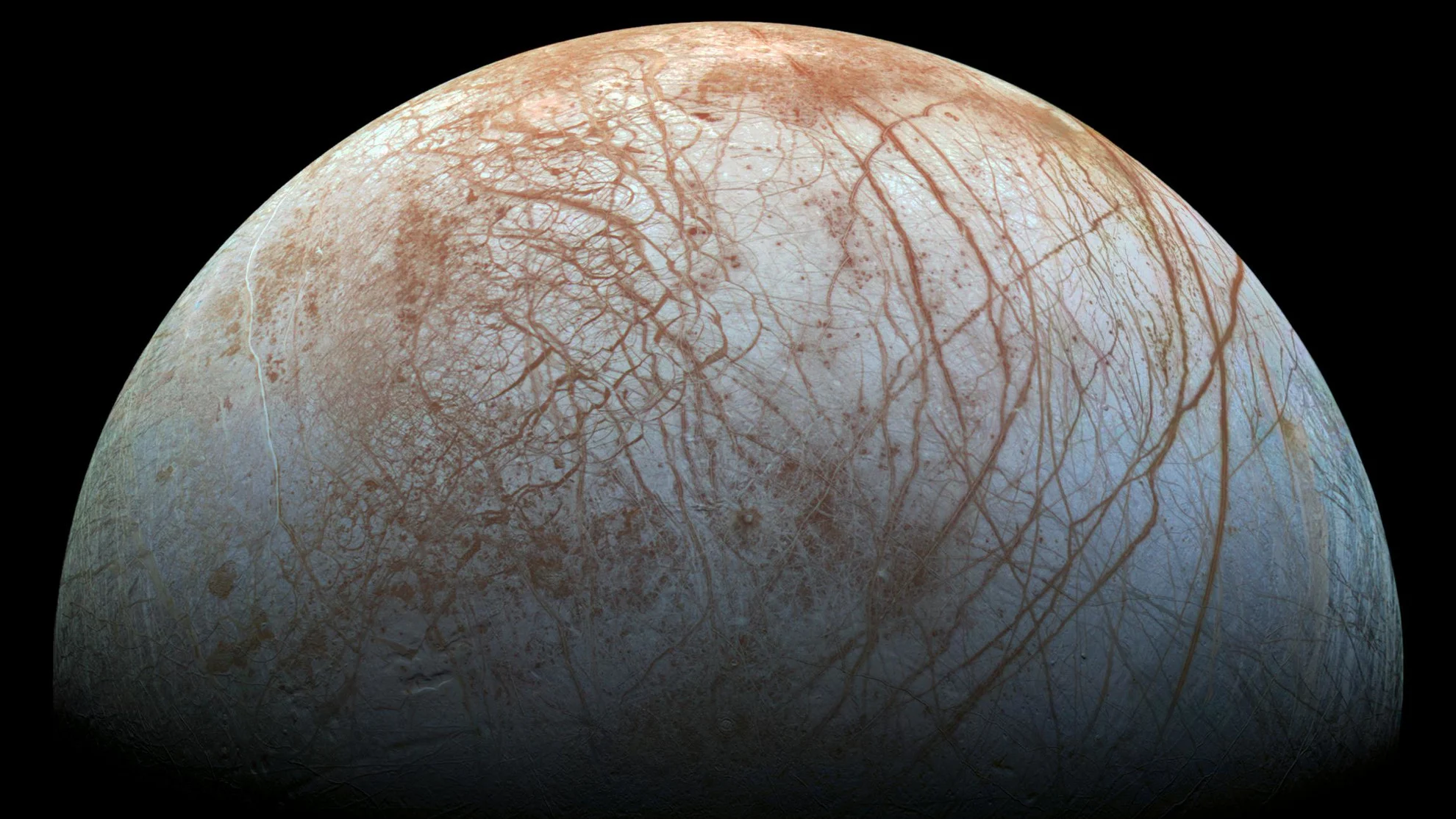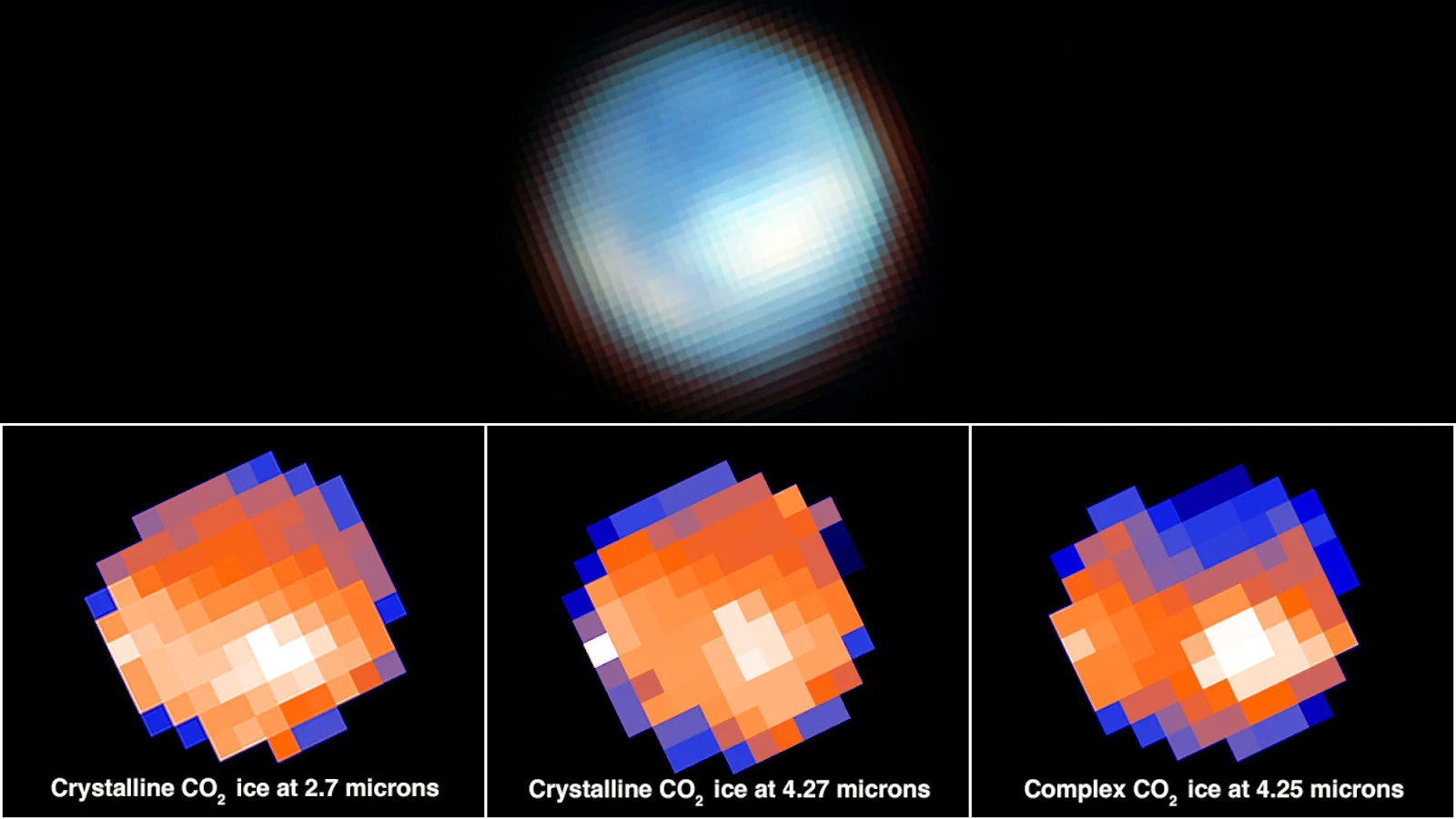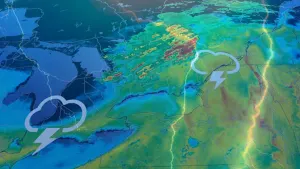
Europa's subsurface ocean may be more habitable than we thought
This discovery signals a potentially habitable environment under Europa's icy surface.
New observations from the James Webb Space Telescope have revealed the first indication that Europa's subsurface ocean contains one of the necessary building blocks of life.
Europa has always been a very intriguing case for finding life beyond Earth. The smallest of Jupiter's four Galilean moons, Europa, is covered in a layer of ice between 15 and 25 kilometres thick. According to NASA, there is abundant evidence that, beneath Europa's ice, there is a global subsurface ocean of salt water up to 150 kilometres deep. That water is kept liquid due to the tidal heating of the moon's rocky core, as it is squeezed and stretched by Jupiter's gravity while Europa orbits the planet.

This closeup view of the sunlit side of Europa was taken by NASA's Galileo spacecraft in the 1990s and reprocessed in 2014. The total amount of ice and water on Europa is apparently more than double the volume of Earth's oceans. Credit: NASA/JPL-Caltech/SETI Institute
Visit our Complete Guide to Fall 2023 for an in-depth look at the Fall Forecast, tips for the season, and much more!
In two new studies, scientists used observations of Europa by the James Webb Space Telescope to closely examine the elements contained in the moon's surface ice.
Both found abundant carbon dioxide.
According to NASA, previous observations of Europa have indicated the presence of its subsurface ocean and the fact that it was filled with salt water. However, it was yet to be discovered if the ocean contained the necessities for life to develop and thrive there.
"We now think that we have observational evidence that the carbon we see on Europa's surface came from the ocean. That's not a trivial thing. Carbon is a biologically essential element," Samantha Trumbo, the Cornell University astronomer who led one of the studies, said in a NASA press release.

This enhanced view of Europa was snapped by NASA's Galileo spacecraft in the 1990s, and processed by scientists to bring out the colour differences in the surface ice. The yellow-coloured region on the left side of the moon is Tara Regio. Credit: NASA/JPL-Caltech/University of Arizona
DON'T MISS: Spectacular 'ring of fire' solar eclipse to dazzle onlookers this Fall season
Much of the CO2 was concentrated in Tara Regio, a region of relatively young ice compared to other areas of the surface. This age difference is likely due to ocean water plumes pushing through the cracked surface and raining down new material across the region. Since carbon dioxide doesn't survive for very long on Europa's surface (it gets broken down by radiation from the Sun and Jupiter), it's unlikely that it originated from some external source, such as meteorites.
"Previous observations from the Hubble Space Telescope show evidence for ocean-derived salt in Tara Regio," Trumbo explained. "Now we're seeing that carbon dioxide is heavily concentrated there as well. We think this implies that the carbon probably has its ultimate origin in the internal ocean."

Europa is shown here via JWST's NIRCam instrument (top). Tara Regio is the bright region in the bottom right of the hemisphere. Also shown are three processed compositional maps (bottom) showing the abundance of carbon dioxide in different forms (crystalline ice and complex ice) across this hemisphere of the moon. The greatest concentrations (lightest colours) are in Tara Regio. Credit: NASA/ESA/CSA/STScI/Cornell University
This detection of carbon dioxide is not conclusive evidence that Europa harbours life. However, it does increase the likelihood that the moon's subsurface ocean is capable of supporting organic life.
"On Earth, life likes chemical diversity — the more diversity, the better. We're carbon-based life," Geronimo Villanueva of NASA's Goddard Space Flight Center, the lead author of the second study describing these results, said in the press release. "Understanding the chemistry of Europa's ocean will help us determine whether it's hostile to life as we know it, or if it might be a good place for life."










